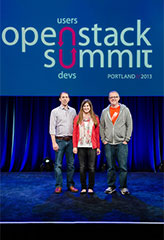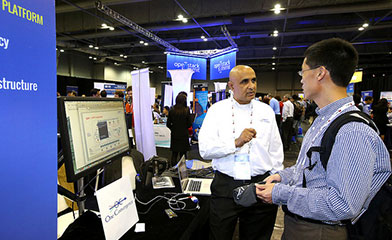The 10th iteration of the OpenStack User Survey highlights expanding footprint of OpenStack clouds, reinforcing architecture trends and introducing new usage patterns
Over the past 10 years, over 2,200 organizations have voluntarily contributed OpenStack usage data and architecture details, across more than 4,000 deployments as well as feedback for the upstream community to improve the software. Over the decade of measurement, several trends emerged:
- The OpenInfra Standard, LOKI (Linux OpenStack Kubernetes Infrastructure), is consistently measured in over 70% of reported OpenStack deployments. Specific components within OpenStack that have seen an increase in adoption over time to deliver this integration include Magnum, Ironic, Kuryr, Kolla, and OpenStack-Helm.
- A hybrid cloud approach is adopted by most cloud users, and this trend is supported by a growing marketplace of OpenStack public and private cloud providers. While AWS remains the most common hyperscaler integrated with OpenStack, the OpenStack-powered public cloud network now exceeds 300 data centers worldwide.
- Upgrades were a common pain point which prevented many organizations from running the most recent release.
While the 2023 analysis continues to highlight these trends, new patterns are emerging that have been reported as too complex in previous years. Organizations with smaller teams have proven that a massive internal team is not required to operate an OpenStack cloud, recent releases are gaining traction highlighting community progress in improving upgrades, and the OpenStack footprint continues to grow both with new clouds coming online as well as growth among OpenStack deployments of all sizes. Additional 2023 data around OpenStack operator demographics, deployment decisions, and cloud size can be found on the OpenStack analytics dashboard.
Global OpenStack Footprint Grows with New Clouds, Growth Across Deployments of All Sizes
The first recorded measure of aggregated OpenStack compute cores was 10 million in 2018. Five years later, the footprint has grown 350% to 45 million compute cores powered by OpenStack running in production. While the growth is most notable among the world’s largest deployments, the growth continues to be seen across deployments of all sizes, regardless of industry and geography.
A significant contributor to this is LINE, the Japanese messaging app that recently merged with Yahoo! Japan to form LY, whose OpenStack deployment grew from 4 million cores last year to 6.9 million cores this year. Large scale OpenStack user Workday also added another 800,000 cores and OVH reached the 1 million core threshold for the first time and its engineers say this growth is expected to continue.
While not all deployments are cataloged in the OpenStack User Survey, new clouds continue to be reported. This year, 12% of the clouds came online within the past nine months highlighting that even 13 years in, OpenStack continues to be adopted to set up new public and private cloud infrastructure.
Smaller Teams Turning to OpenStack Clouds
One of the most interesting data points is around the number of deployments for organizations with 10-99 employees. Around 23% of deployments are managed by an organization this size and that’s the highest percentage this segment has had since 2015. The industry spread here is across academic / research and IT, showing that smaller organizations are having more success in getting OpenStack running in production.
OpenStack Users Increasingly Implementing Recent Releases
This year, 81% of OpenStack deployments run a version within the last 5 releases compared to 72% in 2022. The OpenInfra Foundation anticipates that this percentage will continue to improve with the implementation of a new release cadence this year. OpenStack 2023.1 (Antelope), released in March 2023, was the first in the Skip Level Upgrade Release Process (SLURP) cadence recently established by the Technical Committee. Every other release will be considered to be a “SLURP” release. Deployments wishing to stay on the six-month cycle will deploy every “SLURP” and “not-SLURP” release as they always have. Deployments wishing to move to a one-year upgrade cycle will synchronize on a “SLURP” release, and then skip the following “not-SLURP” release, upgrading when the subsequent “SLURP” is released. The community is hopeful that this alleviates some of the complexities within the OpenStack upgrade process.
Share your feedback
The OpenStack User Survey is open year-round, and is hosted by the OpenInfra Foundation, who supports the OpenStack community as well as other open source projects. This survey captures the deployments and feedback cataloged between August 2022 and August 2023 and this report aggregates trends and notable statistical growth.
The OpenStack User Survey is an annual, opt-in survey for organizations running OpenStack. The analysis presented in this report represents the shared information, but the actual footprint of OpenStack powered clouds is much larger. If you are operating an OpenStack cloud or operating clouds for customers, please take the 2024 User Survey so we can understand the global footprint and pass your anonymous feedback along to the upstream development teams.









